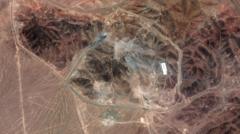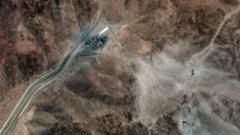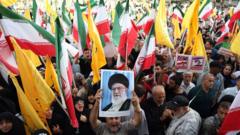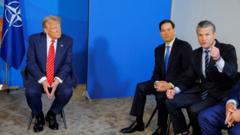As Iran's Supreme Leader, Ayatollah Ali Khamenei, prepares to emerge from hiding, he confronts a nation left reeling from military conflict and internal dissent. The fragile ceasefire presents challenges to his authority while shifting dynamics in Iranian society signal a potential reckoning for his nearly 40-year reign.
The Uncertain Future of Iran as Khamenei Emerges from Hiding
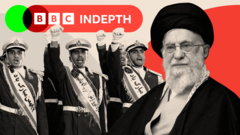
The Uncertain Future of Iran as Khamenei Emerges from Hiding
After a prolonged absence during the war against Israel, Ayatollah Khamenei faces a drastically altered Iran upon his return.
After nearly two weeks sheltering in secrecy due to fears of assassination amid ongoing hostilities with Israel, Ayatollah Ali Khamenei, the Supreme Leader of Iran, faces an imminent decision to emerge during an unexpectedly fragile ceasefire. His situation reflects a broader turmoil within Iran, as the military's resilience is questioned and public sentiment may be transitioning towards dissent.
Reports indicate that high-ranking officials, including Khamenei himself, have maintained no contact, leading to speculation about the extent of governmental instability. Commentators suggest that even diplomatic interventions, such as the ceasefire mediated by U.S. President Donald Trump and Qatar's Emir, are insufficient safeguards against the potential for an escalated conflict.
Once re-established in the public eye, Khamenei is likely to project a façade of victory, despite the evident destruction and loss of life that permeates Iranian society. The war has notably eroded military capabilities, with significant losses reported among leaders of Iran's Revolutionary Guard and military commanders. The communication between Khamenei and the Iranian populace may be strained, particularly given the increasing scrutiny over his decisions that have led the nation into disarray.
As criticism mounts, many citizens are beginning to attribute the country’s considerable misfortunes directly to Khamenei, blaming him for the regime’s aggressive posturing against Israel and the subsequent fallout. The perspective that achieving nuclear status would secure the country's interests has become increasingly contentious, revealing a disillusioned populace questioning the regime's trajectory.
Amid the turmoil, whispers of discontent echo throughout the upper echelons of power, with former regime figures suggesting that alternative leadership might be explored. Experts foresee a divided leadership struggling to address widespread dissatisfaction and growing anger among everyday Iranians, raising questions about the regime's future and the possibility of internal change.
As ordinary citizens grapple with mixed feelings of national pride versus disdain for their ruling officials, community solidarity has been noted amidst the chaos. This juxtaposition serves as an indication that, despite the regime's oppressive measures, a demand for transformation is simmering just beneath the surface. Khamenei's maintaining power could hinge upon whether he is able to acknowledge the shift in public sentiment and respond effectively to the ensuing dissatisfaction.
The potential looming threat of regime change stirs anxiety among Iranians, who fear that any attempt to unseat the leadership might descend into violence or chaos rather than constructive reform. Khamenei, now of advanced age and health concerns, may find the pressing need to secure a stable succession to preserve the Islamic Republic's core tenets. Both his strategies and Iraq's military capabilities remain uncertain; critical missile silos and nuclear ambitions pose lingering challenges for the international community's involvement in Iran.
Observations from this tumultuous period suggest a tenuous balance awaits Ayatollah Khamenei—a leader confronting external vulnerability while navigating an increasingly defiant domestic landscape. As he prepares to navigate these challenges, the future of Iran remains uncertain—with many hoping for meaningful change amid years of autocratic rule.




